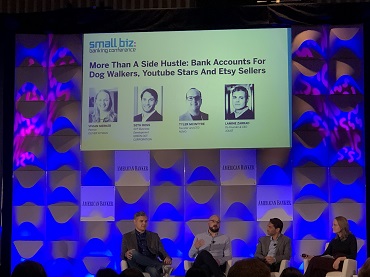Blog
The Real Gap between Banks and SMEs

At the recently held Global SME Finance Forum in Antalya, Turkey, there was quite predictably a lot of talk about who is going to win—traditional banks or fintech startups. People chose their sides and presented their arguments. There is another group that basically asked, “can’t we all get along?” and suggested that the market opportunity is big enough for everyone, or that the two sides offer the greatest value complementing one another. But all of this misses the bigger question: why do fintechs exist at all and why are they growing so fast?
Well, to be fair, some observers generally answer this question by suggesting that large corporate banks have a hard time innovating because they are too slow, too risk-averse, too siloed and secretive even between departments; that they don’t believe in experimentation; or that they are too fat and happy with the existing bloated transaction fees to change. This is probably all true to some degree in most organizations. Others suggest that it’s not that fintechs are smarter or more nimble, but that they simply have an unfair advantage in that they are not regulated the way traditional banks are. The latter is also true, but with most banking regulators wanting to stimulate financial services innovation, this is probably not going to change no matter how much banks spend on lobbying.
All of the above points merely explain the rapid growth of fintech startups. But why do fintechs exist at all? If a company only exists to meet a market need, then established banks are missing the boat on an entirely new set of market needs, and have opened the door wide open for an entirely new class of competitor arising from inside financial services—but increasingly from outside of it as well.
What’s changed to allow this new class of competitive? Our world has become a place of constant flux for SMEs, with heightened volatility and less predictable economic cycles. SMEs have long resigned themselves to a position of being poorly served by banks; accepting that’s just the way it is. SMEs are typically either offered inappropriately scaled down corporate solutions they can’t make sense of or don’t fit their economic rhythms, or are conversely steered to consumer banking solutions that don’t provide the tools and views SMEs need to run small, bootstrapped businesses. The status quo has been SMEs clamoring for better solutions, and banks shrugging in response.
So then isn’t being unrecognized, unappreciated and underserved by banks just business as usual for SMEs? No it’s not; because something has changed. An emerging generation of Digital Natives has changed the playing field. Like SMEs, Digital Natives live in an uncertain world with no clear career paths and with unpredictable income cycles. In this environment, Digital Natives’ over-riding strategic objective is to keep their options open to avoid challenges and latch on to opportunities. In financial services, this focus on keeping options open manifests itself with Digital Natives looking for informal and immediate solutions rather than offers that require extensive education and/or commitment, setup and regular tending. The financial needs of Digital Natives sound a lot like SMEs, don’t they?
Here’s the difference though: Digital Natives’ needs are underserved, but they will not accept this situation. Some Digital Natives recognize the gap in financial services needs for themselves and others in their generation and they have decided to solve them. This generation has the same need state as SMEs (because a majority of them do not have traditional jobs and act economically like SMEs). However, they have a very different mindset—as consumers, they believe that they should be catered to—unlike SMEs. Generationally, they also believe they have the ability to change this status quo. And why shouldn’t they? Their generation has been shaped by digital technologies and they share an entrepreneurial DNA. And right now, there is plenty of idle money looking for good ideas in which to invest.
In this context, fintech vs. corporate banking is really missing the bigger issue. Fintech is a catchy handle to describe a rapidly emerging phenomenon that really is disrupting the banking landscape and consumer expectations, but the reality is that the fintechs’ advantage is not primarily a technological one, but that they do a very good job of identifying unmet SME banking needs and then creating radically compelling value propositions, simple solutions that each do one thing really well and really simply, thinking mobile first. The results are SME offers that are more useful and usable within the patterns, rhythms and constraints of SME business reality.
Everyone providing financial services—established and new entrants—must understand the real current and emerging needs in a changing business environment for SME customers. Fintechs use technology in cutting-edge ways, but technology is not their primary differentiator. They first focus on truly understanding SME needs extremely well and deliver the right solutions.
This is where traditional banks tend to fall down. Dismissive comments like “banks are much bigger spenders on technology than fintech startups” completely missed the threat. It’s not how much you spend, but how you spend it. If you don’t recognize the real new needs—or the gap between your existing offers and what the customer actually needs—this technology spend cannot be taken seriously. Digital disruption has created an environment of more competition, more information, and more transparency that allow SMEs to more intelligently compare offers made to them. Solutions built to meet SME needs within this reality will win.
If financial service institutions want to keep in touch with SME needs, then they need to interact with this customer group intensely and either partner with fintech startups or change their own organizational model to support value proposition and business model innovation and then choose the best technological solutions that support those. This will bridge the current gap between banks and SME customers and create a more vibrant SME market globally and ensure traditional banks remain relevant.








